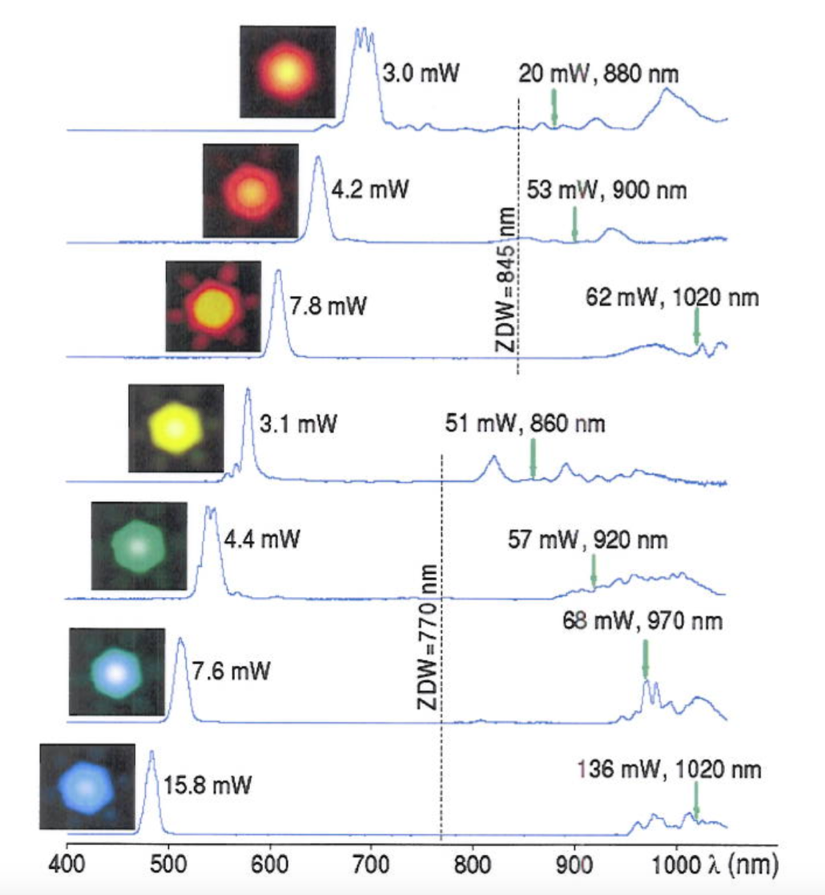An apparatus and methods for generating a substantially supercontinuum-free widely-tunable multimilliwatt source of radiation characterized by a narrowband line profile. The apparatus and methods employ nonlinear optical mechanisms in a nonlinear photonic crystal fiber (PCF) by detuning the wavelength of a pump laser to a significant extent relative to the zero-dispersion wavelength (ZDW) of the PCF. Optical phenomena employed for the selective up-conversion in the PCF include, but are not limited to, four-wave mixing and Cherenkov radiation. Tunability is achieved by varying pump wavelength and power and by substituting different types of PCFs characterized by specified dispersion properties.
Optical frequency up-conversion of infrared (850-1100nm) femtosecond laser pulses into visible pulses (470-690nm) by Cherenkov radiation and inter-modal four-wave mixing in photonic crystal fibers (PCF) enables generation of:
- multi-milliwatt
- tunable
- supercontinuum-free
optical pulses in a wavelength region otherwise inaccessible from the source. Current commercial devices for optical frequency up-conversion are optical parametric amplifiers based on Four-wave mixing (FWM). These devices are input laser wavelength specific, expensive and usually have a large footprint.
Whereas other similar devices require dedicated fabrication facilities or special components, frequency up-conversion based on Cherenkov radiation does not call for exotic dispersion engineering of the photonic crystal fiber. The resulting compact device can be used with source lasers with various wavelengths. Intense, clean visible pulses have potential application in ultrafast spectroscopy, coherent nonlinear spectroscopy and multi-photon microscopy.



